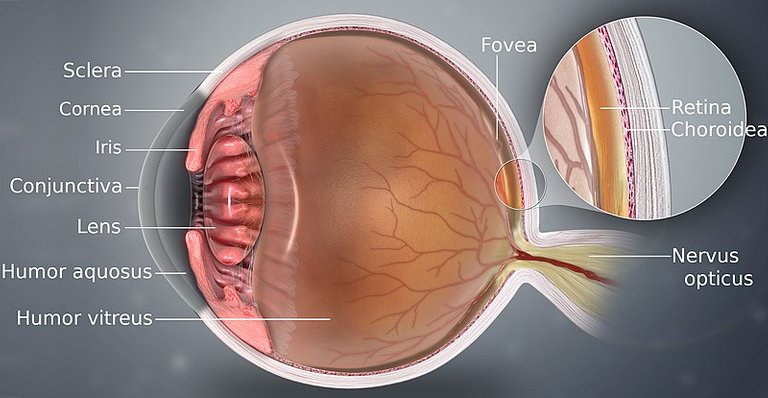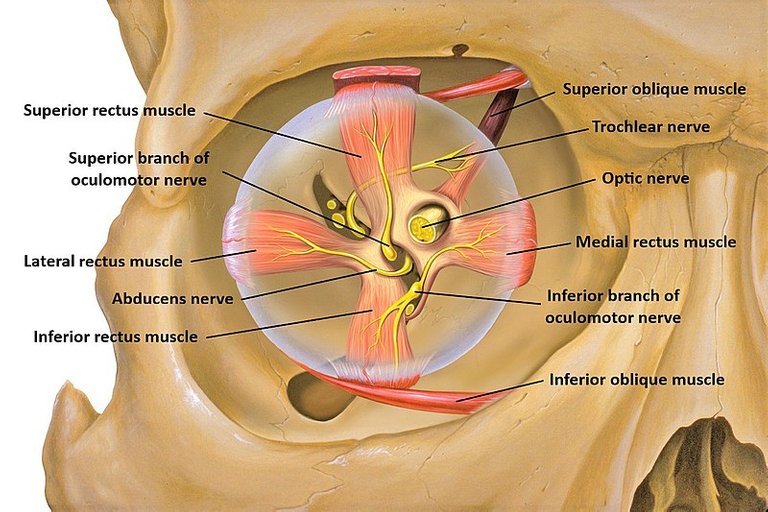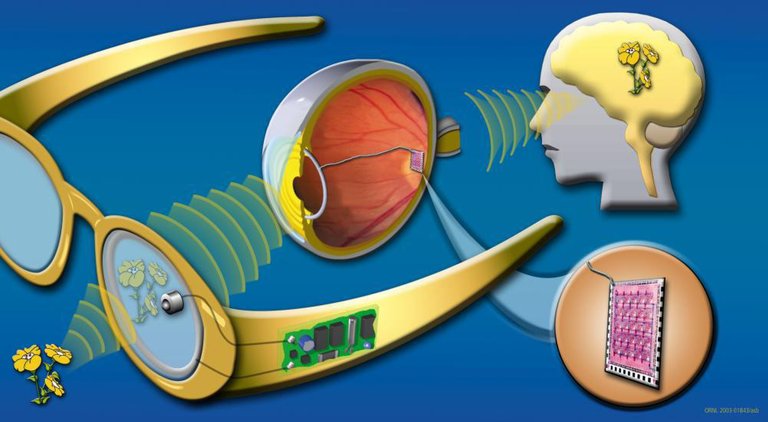Goodbye to Blindness
Some may say that the eyes are the most vital part of the body. "What is life without the ability to see, completely worthless and not worth living," said a young guy I met at the hospital in early June 2021 who had lost his sight due to a car accident. Standing in front of this young man, I could feel his suffering and fathom the type of life he is forced to live.

Source
Every area of human life is becoming easier thanks to technology, and everyday scientists are going above and beyond to improve our lives. With the knowledge that this scientist has invented a prosthetic implant dubbed Bionic eye. This is encouraging and will contribute to the solution of the problem of blindness and deterioration of visual function.
The eye is one of the body's sense organs; it's the organ that allows us to see and enjoy the beauty of the world around us. Any malfunction in any area of the eye can result in vision impairment and, eventually, blindness.

Image showing different layers of the eye
Brief Anatomy of The Eye
The eye is globular in shape and is located in the eye socket(bony cavity in the skull). It is made up of three layers:
The outer layer
The middle layer
The inner layer
The Outer Layer of the Eye Provided Protection to The Middle and Inner Layer and it Consists of The Following Structure:
1.The Sclera covers 4/5 of the eye, it is opaque and provides attachment to the muscles of the eyes. its extends from the lamina cribosa behind and end at the limbus(the junction between the sclera and the conjunctiva).
2.The Conjunctiva is a thin transparent membrane that overlies the cornea.
3.The Cornea is located in the middle of the eye, is transparent, and plays an important function in the visual pathway. It bends light and refracts it.
The Middle Layer(Uvea) Consist of The Follow Structures:
1.The Iris regulates the pupil's broadening (dilation when light intensity is low) and narrowing (contraction when light intensity is high) in response to light intensity. It controls the amount of light that reaches the eye.
2.The ciliary muscles are responsible for holding the lens in place as well as providing accommodation.
3.The Choroid is a blood artery that feeds the eye with nutrients.
The Inner Layer Consist of The Follow Structures:
1.The retina is an important part of the eye because it focuses light intensity and converts it into electrical impulses, which are then sent to the brain (visual center) for interpretation. The central macula (fovia) is responsible for central vision and day vision, while the periphery is responsible for night and peripheral vision. The retina connects to the optic nerve at the end, allowing electrical transmission of the image formed at the retina to the brain.
2.The vitreous humor is a jelly-like substance that contains 99 percent water and acts as a nourishment delivery system for the lens and retina.
Other Important Structure of The Eyes
1.The lens is a transparent biconvex structure that is vital for light refraction and accommodation. If the lens is injured or becomes clouded/opaque (cataract), light transmission through the lens into the retina is reduced or absent.
2.The ocular muscles, which are six in number and include the superior, inferior, medial, and lateral rectus muscles, as well as the superior and inferior oblique muscles, keep the eyes in a stable position. Any damage or paralysis to any of the muscles alters the affected eye's natural central location.
3.The ophthalmic artery and vein provide blood supplies to the eye. Blood supply is necessary because it provides nutrients to the eye's structure and removes hazardous waste.
4.The optic, oculomotor, trochlear, trigeminal, and facial nerves all supply the eye with nerves. These neurons aid in the transmission of electrical information from the image created to the brain's visual center.

The occular muscle, nerve and eye socket
Bionic Eye the Future of Vision
Individuals with irreversible blindness, such as age-related macular degeneration, retinitis pigmentosa, diabetic retinopathy, glaucoma, and retina degeneration, can benefit from bionic eye implants.

Bionic implant
The Visual Pathway;
To comprehend how the bionic eye functions, one must first comprehend how the human eye functions.
The cornea and lens play a crucial role in refracting light and focusing it on the retina's macula. The retina cells convert this light intensity into electrical impulses, which are then transferred to the brain's visual area via the optic nerve for accurate image interpretation.
A small camera, glasses, a stimulator, and a retinal implant make up the Bionic implant.
Through the employment of its camera, the bionic implant bypasses the function of the cornea and lens, and the image captured is communicated to the retinal implant. The retinal implant turns the image into electrical stimuli and stimulates the cells of the optic nerve that transmit electrical impulses to the brain's visual center for interpretation.
Conclusion
The research to develop this life-changing technology is still underway; for the time being, people who have this implant can only see in black and white, and their eyesight is not very accurate. The cost of a bionic implant is high, and not everyone can afford it. This technology, I feel, will be perfected in the near future.
Take careful care of your eyes, my friend, since eyesight is priceless.
Thank you for reading, Happy New Year, and have a wonderful day.
Reference
1.https://www.allaboutvision.com/conditions/bionic-eyes.htm
2.https://www.sydney.edu.au/news-opinion/news/2021/12/01/bionic-eye-study-paves-the-way-towards-human-trials.html
Congratulations @drlins! You have completed the following achievement on the Hive blockchain and have been rewarded with new badge(s):
Your next target is to reach 1000 upvotes.
Your next target is to reach 200 comments.
You can view your badges on your board and compare yourself to others in the Ranking
If you no longer want to receive notifications, reply to this comment with the word
STOPTo support your work, I also upvoted your post!
Check out the last post from @hivebuzz:
Thank you
You're welcome @drlins